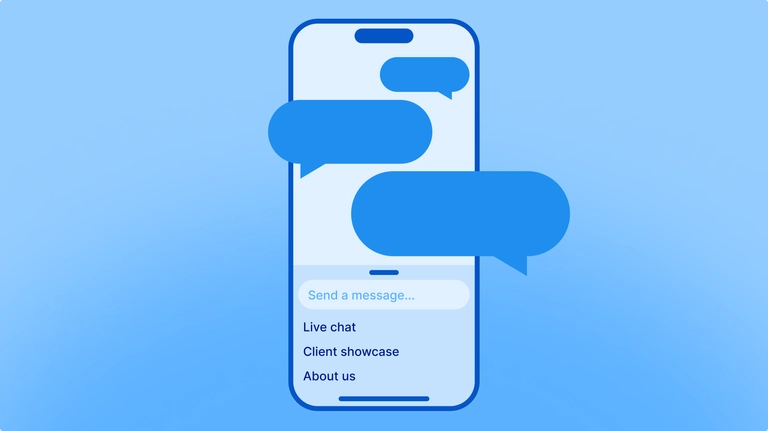
How to make a Q&A chatbot for FAQs
Chatbots provide users with instant responses — explore how to create a question-answer chatbot for handling frequent questions.
Chatbots have become an important tool for businesses. They talk with your customers and provide instant and automated responses to frequently asked questions (FAQs).
Chatbots have evolved from simple text-based interfaces to more conversational ones that allow for a more human-like interaction. Below, I’ll explore how to create a question-answer (Q&A) chatbot, a type of chatbot designed specifically for handling FAQs.
Why use a Q&A chatbot
Q&A chatbots can help improve customer experience by providing quick and accurate answers to common questions 24/7. They can also relieve the workload of customer support teams by handling routine inquiries, allowing them to focus on more complex tasks. Finally, Q&A chatbots can be integrated with various platforms such as websites or messaging apps. This makes them a good choice for any business’s toolbox, big or small.
Choosing the right platform
There are several platforms that allow you to create Q&A chatbots. When choosing a platform, consider the following things:
- Ease of use. How intuitive is the platform for non-technical users?
- Customization options. Can you customize the look and feel of the chatbot to match your brand?
- Integration. Can the platform integrate with other tools and platforms that you already use?
- Price. How much does the platform cost, and are there any hidden fees?
Once you have decided on a platform, you can start creating your Q&A chatbot. If you need help deciding which platform to choose, check out my platform comparison guide. You’ll find everything you need to make the decision: pricing, ease of use, integrations, and more.
Creating your Q&A chatbot
Here is a step-by-step guide to creating a Q&A chatbot.
- Gather FAQs: Start by making a list of the most common questions that your customers ask. The list is the foundation for your chatbot’s knowledge base.
- Organize FAQs: Group similar questions together and give each group a label or category. This will make it easier for your chatbot to understand the context of each question and provide an accurate answer.
- Create keywords: A keyword is a certain word or phrase that triggers a response from your bot. For a Q&A chatbot, you’ll need to create keywords for each category of questions. For example, your keywords are “shipping inquiries” or “product returns.”
- Define answers: For each keyword, you’ll need to provide a set of answers that your chatbot can use to respond to customer inquiries. Make sure the answers are clear, concise, and easy to understand.
- Test and refine: Test your chatbot to make sure it is providing accurate answers to customer inquiries. Refine the answers as needed based on customer feedback.
- Launch: Once your chatbot is functioning as expected, you can deploy it to your website or other platforms where it will be accessible to customers.
NLP and handling questions
A well-designed Q&A chatbot can answer many of the FAQs, yet there will always be some questions that the bot may remain unanswered. That’s where NLP comes in.
Natural Language Processing (NLP) is a technology that lets chatbots understand and interpret human language, including different phrasing and sentence structure. With NLP, chatbots can respond to questions even if they are not put in an exact way as the configured keywords.
For example, if a customer asks a question about product details that is not included in the chatbot knowledge base, the chatbot can use NLP to analyze the question and provide an appropriate response.
To make the most of NLP, you can analyze users’ questions that are not being answered by the chatbot and use them to refine your chatbot’s knowledge base. This helps to continuously improve accuracy and efficiency in responding to customer questions.
With NLP, your Q&A chatbot can respond more effectively and accurately to customer inquiries.
Conclusion
A Q&A chatbot can greatly improve customer experience by providing instant answers to common questions. By following the steps outlined above, you can create a chatbot that can handle routine inquiries, freeing up your customer support team to focus on more complex tasks. Whether you are a small business or a large enterprise, a Q&A chatbot can help you provide better customer support and improve customer satisfaction.
